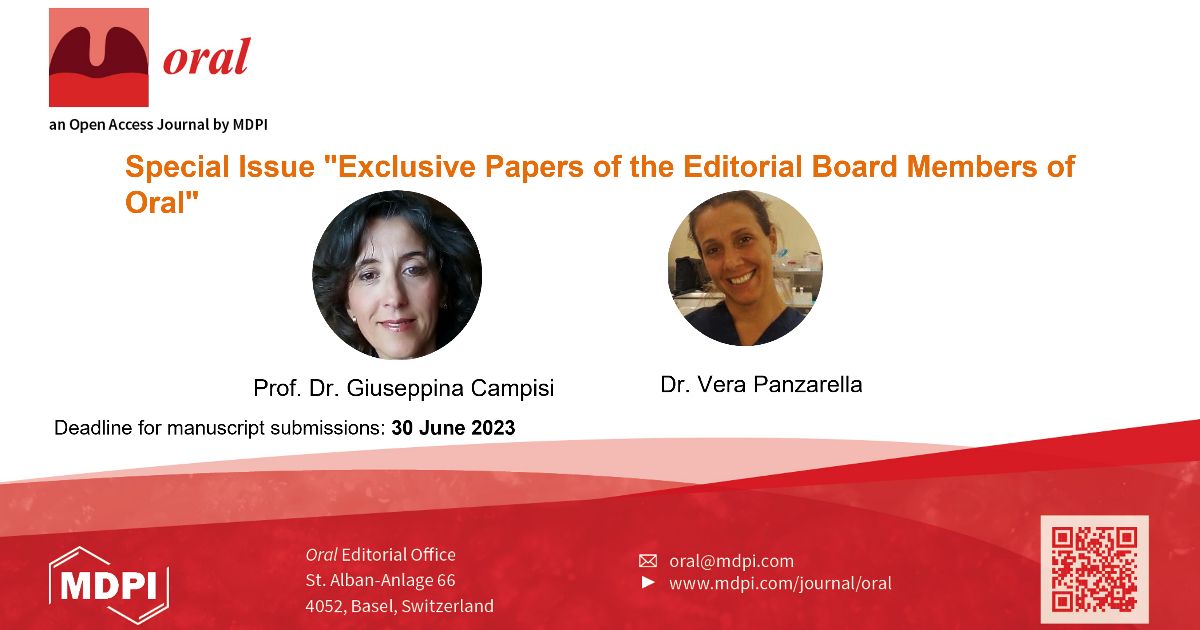Exclusive Papers of the Editorial Board Members of Oral
A special issue of Oral (ISSN 2673-6373).
Deadline for manuscript submissions: closed (30 June 2023) | Viewed by 17929

Special Issue Editors
Interests: oral medicine; medication-related osteonecrosis of the jaw; head and neck oncology; viral oral infections; dental public health; teledentistry
Special Issues, Collections and Topics in MDPI journals
Interests: oral medicine; digital medicine; oral carcinogenesis; immuno-mediated oral diseaes; oral infectious disease; human papilloma virus; osteonecrosis of the jaw
Special Issues, Collections and Topics in MDPI journals
Special Issue Information
Dear Colleagues,
We are pleased to announce this Special Issue entitled “Exclusive Papers Collection of Editorial Board Members of Oral". This Special Issue will be a collection of high-quality papers from Editorial Board Members. Both original research articles and comprehensive review papers are welcome. All papers will be published as fully open-access articles after a successful peer review process.
Prof. Dr. Giuseppina Campisi
Dr. Vera Panzarella
Guest Editors
Manuscript Submission Information
Manuscripts should be submitted online at www.mdpi.com by registering and logging in to this website. Once you are registered, click here to go to the submission form. Manuscripts can be submitted until the deadline. All submissions that pass pre-check are peer-reviewed. Accepted papers will be published continuously in the journal (as soon as accepted) and will be listed together on the special issue website. Research articles, review articles as well as short communications are invited. For planned papers, a title and short abstract (about 100 words) can be sent to the Editorial Office for announcement on this website.
Submitted manuscripts should not have been published previously, nor be under consideration for publication elsewhere (except conference proceedings papers). All manuscripts are thoroughly refereed through a single-blind peer-review process. A guide for authors and other relevant information for submission of manuscripts is available on the Instructions for Authors page. Oral is an international peer-reviewed open access quarterly journal published by MDPI.
Please visit the Instructions for Authors page before submitting a manuscript. The Article Processing Charge (APC) for publication in this open access journal is 1000 CHF (Swiss Francs). Submitted papers should be well formatted and use good English. Authors may use MDPI's English editing service prior to publication or during author revisions.




